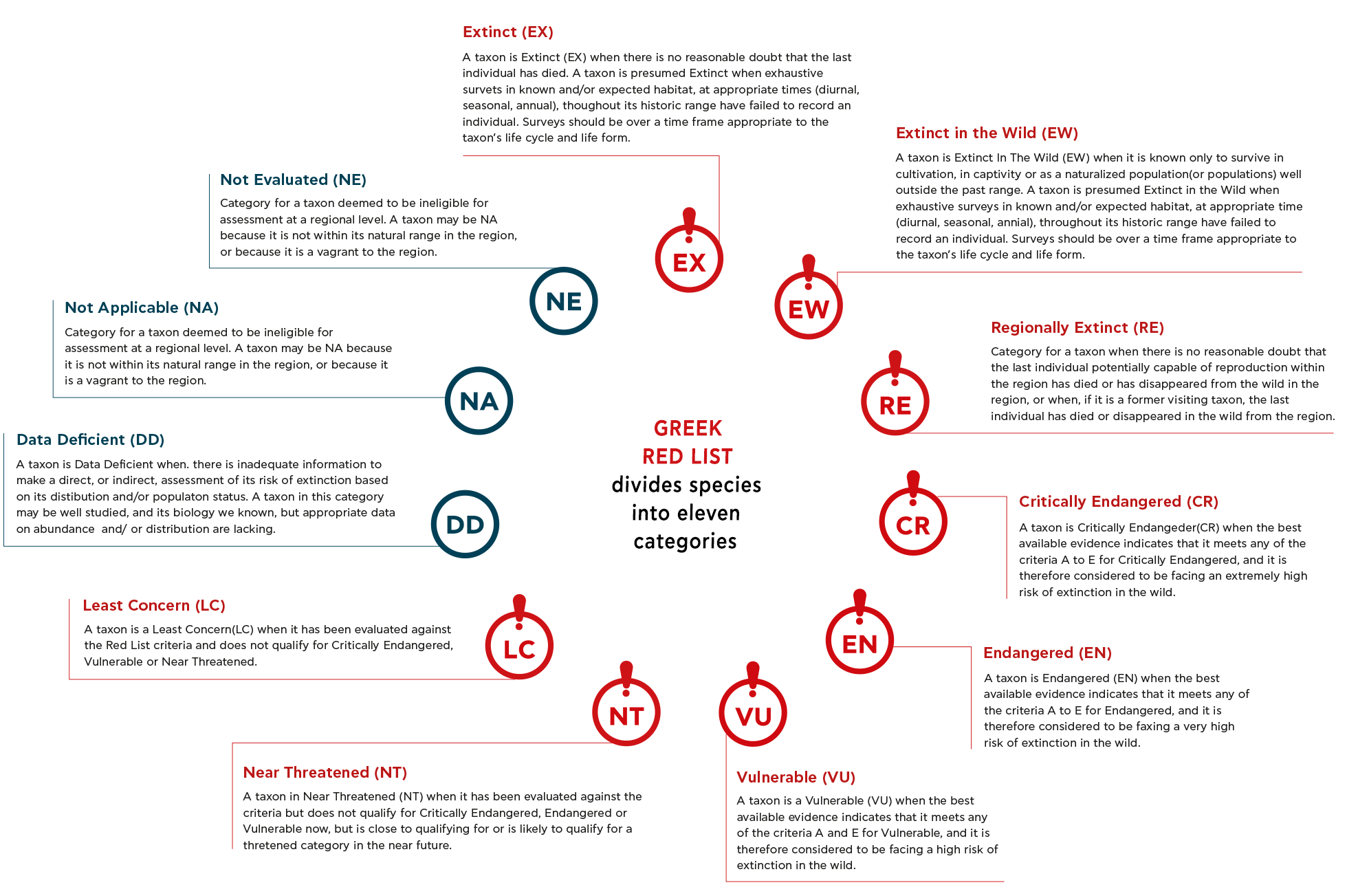Chamaeleo chamaeleo Non endemic Red List Category: Endangered(EN) Assessor(s):Dimaki, M.
Read More
Τhe Greek Red List includes
the assessments of almost 11,500 species
At least 21% of the assessed species are threatened.

INSECTS

ARACHNIDS

PLANTS

GASTROPODS

FUNGI

BIRDS






Insects
Plants
Gastropods
Fungi
Birds
"Today we can, protect more effectively the
unique Greek biodiversity using this valuable tool" "KONSTANTINOS TRIANTISChief Executive Officer of NECCA
The Greek Red List of Endangered Species is an emblematic project for the protection and management of Greek nature.
Through this project, N.E.C.C.A. created a network of 140 Greek and foreign scientists, who assessed over 11,000 species of animals, plants and fungi and classified them in threat categories, with the cooperation and support of the International Union for Conservation of Nature (IUCN), the Hellenic Zoological Society (HZS) and the Hellenic Botanical Society (HBS).
The Red List data constitute a valuable tool for biodiversity conservation. They enable the formulation of targeted conservation actions and protection policies, aiding in the planning process to safeguard Greece’s abundant natural heritage. Additionally, Red List contribute to the promotion of sustainable management practices for the country’s natural resources.
The species included in the Greek Red List have been assessed according to the criteria set by the International Union for Conservation of Nature (IUCN), while all the Greek endemic species that have been assessed within the context of this project will gradually become part of the global IUCN Red List of threatened Species.
The Greek Red List, aligning with the International Red List (IUCN Red List), operates as an openly accessible database, ensuring access to scientific information regarding flora and fauna species for everyone interested.
Today we can, protect more effectively the unique Greek biodiversity using this valuable tool
Chamaeleo chamaeleo Non endemic Red List Category: Endangered(EN) Assessor(s):Dimaki, M.
Read MorePhyseter macrocephalus Non-Endemic Red List Category:Endangered(EN) Assessor(s): Koutouzi, N. Photo:
Read MorePinna nobilis Non-endemic Red List Category:Critically Endangered(Cr) Assessors: Poursanidis,
Read MoreNeophron percnopterus Neophron percnopterus Non-endemic Red List Category: Critically
Read MoreThe evaluation of the risk of extinction of species based on the criteria of the International Union for Conservation of Nature (International Union for Conservation of Nature – IUCN) can be done both at global and national level.
The assessment of almost 3.000 Greece’s endemic species is done, de facto, at a global level, while non-endemic species are assessed at a national level.

The categories Regionally Extinct (RE) and Not Applicable (NA) are used for national-level assessments only.
A taxon is considered threatened when it falls into one of three categories: Critically Endangered (CR), Endangered (EN) or Vulnerable (VU).
Natural Environment and Climate Change Agency (NECCA) (2024).
The Greek Red List of Threatened Species.
Athens, Greece. Available at redlist.necca.gov.gr, accessed
